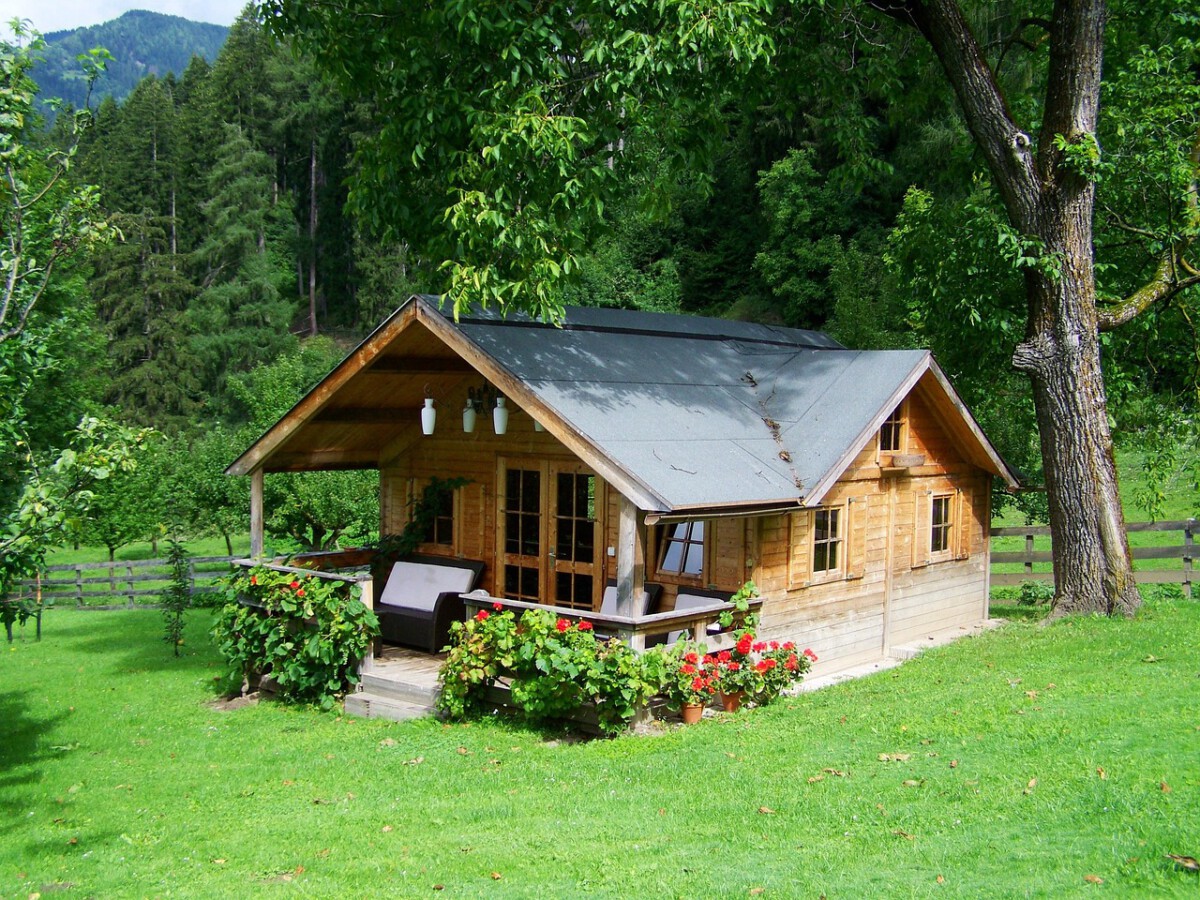America’s Growing Obsession with Smaller Spaces

Picture this: your entire life fitting into a space smaller than a parking spot. Shocking? Maybe. 73% of Americans would consider living in a tiny home, according to recent research. This isn’t just a passing trend—it’s becoming the new American dream. Gen Z and Millennials are most interested in tiny homes with 75% considering living in one. The movement that started during the 2008 recession has exploded into something much bigger. The compound annual growth rate of the tiny house market is expected to be 4.88% between 2022 and 2027, forecasted to result in a market size increase of USD 4,171.33 million. Americans aren’t just thinking small—they’re revolutionizing what home means entirely.
The Financial Freedom Revolution

On average, tiny homes cost $67,000, which is 87% cheaper than normal-sized houses. But the real magic happens after you move in. 65% of tiny home dwellers have no credit card debt, whatsoever, and 68% don’t have a mortgage payment. Think about that for a moment—imagine living without those crushing monthly payments that eat up most people’s paychecks. 55% of tiny house owners have more savings than the average American. The financial benefits extend beyond just lower housing costs. The cost for most tiny house dwellers seldom surpasses $1,000 per month, while US homeowners pay $1,100 per month just in mortgage payments.
Environmental Warriors in Small Packages

People who live in tiny homes have a 45% lower ecological footprint than the average American (3.87 global hectares vs 8.4 global hectares). The environmental impact is staggering when you consider the scale. The building and construction industry is responsible for roughly 35% of global carbon emissions, so choosing to build smaller makes a massive difference. A smaller home means fewer materials are required to build the house, reducing manufacturing and construction time, and fewer rides needed to transport these materials, reducing carbon emissions from factories and vehicles. Americans are discovering that living tiny isn’t just about personal benefits—it’s about saving the planet one small house at a time.
The True Cost of Going Tiny

Let’s talk real numbers that matter to your wallet. 40% of Americans are willing to spend $50,000 to $99,999 on a move-in ready tiny home, while 23% are willing to spend lower ($30,000 to $49,999). But here’s where it gets interesting—when considering cost per square foot, tiny homes are actually 38% more expensive. Despite this, the overall financial picture remains compelling. Tiny house monthly housing expenses can be as low as $600. The upfront investment might seem steep per square foot, but the long-term savings are undeniable. Americans are learning that sometimes paying more per square foot means paying dramatically less overall.
Communities That Actually Connect

More than 3 in 5 (65%) Americans would consider living in a tiny home community. These aren’t just housing developments—they’re social experiments that work. Tiny house communities are on the rise, with over 14,000 individuals currently living in such communities across the country. In these communities, neighbors become friends. The design of tiny house communities encourages interaction and support among residents. This social aspect is vital for mental health and well-being. It creates a sense of belonging that many traditional housing options lack today. Americans are rediscovering what it means to actually know their neighbors, proving that smaller spaces can create bigger connections.
Mobility Meets Modern Living

Tiny houses on wheels, known as THOWs, account for 68% of all tiny house builds, offering mobility and flexibility. This isn’t just about having a house—it’s about having the freedom to take your home anywhere. Tiny houses, often built on trailers, give us the freedom to travel without leaving home behind. We’re not tied to a permanent foundation, so moving is a simple process of hitching up and hitting the road. Americans are embracing nomadic lifestyles without sacrificing comfort. One of the biggest advantages of tiny home living is the ability to easily move your entire house wherever you choose, providing a more flexible lifestyle, whether traveling to new places or simply moving closer to loved ones.
Technology Integration That Actually Works

Modern tiny homes aren’t primitive cabins—they’re high-tech marvels in small packages. Customizable elements of tiny homes that make them more energy-efficient and sustainable include using low-flow water appliances, filtration systems, LED lighting, and solar power. For the most eco-minded tiny home dwellers, it’s possible to eliminate the dependency on fossil fuels completely by creating a self-sustaining home through solar panels or tiles, reclaimed water, batteries, alcohol stoves and other solutions. Americans are proving that downsizing doesn’t mean downgrading—it means optimizing every single square foot with cutting-edge technology.
Breaking Down Legal Barriers

The biggest challenge facing tiny home enthusiasts isn’t design or financing—it’s the law. Technically, tiny houses are legal in all 50 states. However, the tiny home laws by state vary greatly, with some states openly embracing them and others almost shunning them outright. Fresno was the first US city to label tiny houses on wheels as secondary living units. Most cities in California allow owners to build and occupy their tiny homes. Zoning laws are starting to catch up with the tiny house movement. More places now recognize tiny houses as permanent homes. This change is crucial for the growth of sustainable living spaces worldwide. Progress is slow but steady, and Americans are finding creative ways to navigate the legal landscape.
The Demographics Driving Change

About 38% of tiny home owners are over 50 years of age. About 21% are under 30 years old and between 30 to 40 years old. There are only 18% of tiny home owners within the 40 and 50 years old range. This isn’t just a millennial fad—it’s a cross-generational movement. More than half (55%) of tiny house owners are women. More women own tiny houses than men—only 45% of tiny home owners are men. The demographic spread shows that tiny living appeals to people at different life stages, from young professionals escaping student debt to retirees looking to simplify their golden years.
Smart Storage Solutions That Actually Work

Tiny houses are often designed with multipurpose furniture, with 75% of tiny house owners optimizing space through convertible and space-saving solutions. Americans are becoming masters of efficiency, turning every nook and cranny into functional space. Heating and AC are the most desired tiny home amenities for 60% of people, followed by kitchen space (58%), designated bedroom (48%), laundry (43%), and outdoor space with a view (42%). Thanks to clever design, tiny homes do incorporate storage space, but still less than you would have with an average-size home. This means you have to be more careful with your purchases—buying better quality things, less impulse buying and less waste from packaging.
Energy Efficiency That Pays

According to the Alliance to Save Energy, tiny homes are much more energy efficient than traditional ones. After all, the average American home is somewhere around 2,500 square feet! Because of the smaller space and intentional design, tiny homes require not only less heating and cooling (responsible for almost half of your home’s energy use), but also tend to include more energy efficient appliances, water heaters, and lighting. All together, these things contribute to significantly reducing your energy use (and bill). Tiny houses consume 45% less energy for heating compared to traditional homes, contributing to energy efficiency. Americans are discovering that smaller doesn’t just mean cheaper upfront—it means ongoing savings that add up to real money.
The Investment Opportunity

More than half (54%) of Americans would consider investing in alternative living spaces as rentals. Additionally, 44% would consider putting an additional dwelling unit (ADU) on their property to generate more income by renting it out. This isn’t just about personal lifestyle choices—it’s about smart financial planning. 81% of Americans are considering adding a tiny home to their property to generate rental income. Of the 81% considering adding a tiny home for rental income, 60% are exploring long-term rentals, while 21% are leaning towards short-term rentals. 82% view them as attractive investments. Americans are realizing that tiny homes aren’t just places to live—they’re income-generating assets.
Addressing America’s Housing Crisis

The number of tiny home villages went from 34 in 2019 to 123 by the summer of 2024, in an attempt to prevent homelessness. About 40% of the funding for these projects has come from philanthropic donations. Apart from the environmental benefits, tiny homes—which cost an average of $52,000 in the US—could create affordable housing inventory and shelter unhoused people. In Detroit, Michigan, Cass Community Social Services is building 25 tiny homes on individual lots that will serve as low-income housing. Other tiny home communities are providing shelter to unhoused people, including Milwaukee, Wisconsin, Denver, Colorado, and Olympia, Washington. Americans are proving that tiny homes aren’t just lifestyle choices—they’re solutions to major social problems.
The Psychology of Living Small

However, we’re talking about the psychological freedom one experiences when there is no room for more stuff or distracting clutter. With limited room, the focus shifts from acquiring possessions to valuing experiences and relationships. This is one of the most underrated benefits of a tiny home. Since there is less to maintain, organize, and keep clean, this leads to a change in mindset that can reduce stress and anxiety. Without room to store excess inventory, people are warier of what they buy. They begin to value space more than trinkets and toys and only hold onto their most useful and valuable possessions. As one’s consumption drops, so does their impact on the environment. Americans are discovering that less space doesn’t mean less happiness—it often means more clarity and peace of mind.
The Future of American Housing

The global tiny homes market size was valued at approximately USD 21.93 billion in 2024 and is expected to reach USD 29.88 billion by 2033, growing at a compound annual growth rate (CAGR) of about 3.5% from 2025 to 2033. The projected 143% growth in the market by 2025 suggests that tiny living is here to stay, offering both economic opportunities and a solution to the affordable housing crisis. Other people, communities, and even local governments can see that tiny home living doesn’t just have a place in the future, it is the future when more people embrace tiny homes. This recognition is paving the way for progressive changes in zoning and building codes. Cities are addressing housing affordability and fostering a sense of community by embracing this emerging trend. Americans aren’t just making the most of tiny living—they’re reshaping what the American dream looks like for future generations.
What would you have guessed—that the solution to housing crises, environmental concerns, and financial stress could fit in less than 400 square feet?





